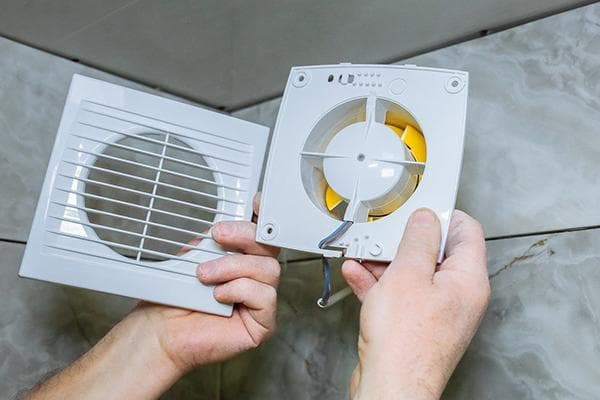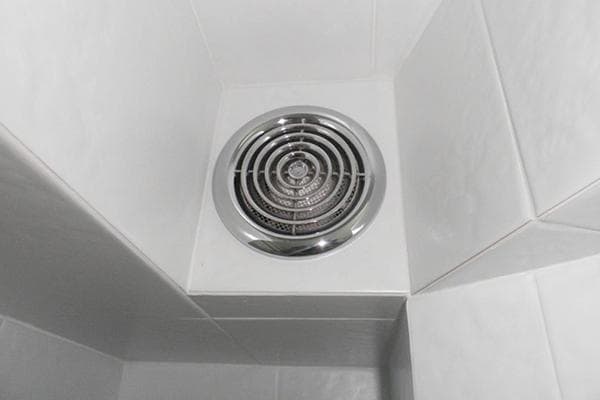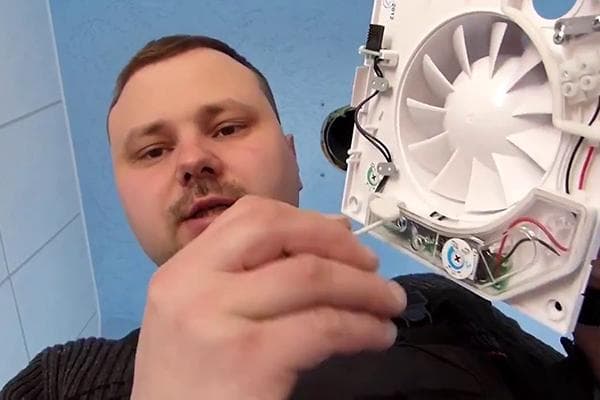The builder suggested how to make the bathroom fan silent
Despite the fact that an exhaust fan should provide comfort to apartment residents, sometimes it becomes a cause of irritation, and the reason for this is the excessively loud sounds that the device makes during operation. You can correct the situation and make the bathroom fan silent; you just need to figure out why the hum, knocking and rattling appeared.

Checking the technical specifications
Exhaust fan noise is an unavoidable occurrence. It should be understood that any device equipped with a motor and moving elements makes sound during its operation. But the sound volume can be different, and it depends on many factors:
- build quality,
- materials,
- design features of the unit.
There are no absolutely silent fans for another reason: they all work on the same principle. The air flows created by the blades become a source of sound (hum, rustling).
If you think that your new bathroom hood is too loud, first check the documents that came with the device. The technical specifications must indicate the noise level produced by the fan. At 25 dB or less, there is no need to worry: your device is as quiet as possible. Higher values - 35–55 dB - may be uncomfortable for people with sensitive hearing. If this is your case, consider replacing the fan with a less noisy one.
When purchasing an exhaust fan, consider a person's ability to adapt to loud noises. If you live near a railway, factory or other similar object, noise at a level of 35–40 dB will most likely be unnoticeable to you. But if you are a resident of a residential area and love silence, then even 25 dB will become an irritating factor for you.
Listening to the sounds
However, in addition to natural background noise, a bathroom fan can make other sounds.
You should be wary if you hear:
- Rattling. Its reason often lies in improper installation of the hood - for example, the builders forgot to fasten one of the parts or assembled the structure in violation of technology. If rattling began after long-term use of the device, it indicates that some of the elements were made of poor-quality material or were subjected to heavy loads, as a result of which they cracked.
- Knock. As a rule, its source is the bearing, and the knock appears several months or years after installing the fan.
- Whistle, hum. They appear due to errors in the design of the ventilation system, as a result of which wind enters the ventilation shaft. Encountering resistance in the form of a directed air flow, the wind “turns around”, which creates sound vibrations.
The noises listed above cannot be ignored, even if they do not greatly disturb your peace of mind. By repairing the device in a timely manner, you will not only get rid of unnecessary irritation, but also save money that you would have to spend on buying a new device after the old one finally breaks down.
“Calm down” the hood in the bathroom: do-it-yourself repairs
To reduce the noise level emitted by a fan, it is not necessary to contact specialists. If you have at least a little understanding of how this device is connected to the electrical network and how it is mounted in a wall or ceiling, you can easily do the work yourself.
Eliminating rattling
Getting rid of this sound is not difficult. Proceed as follows:
- Disconnect the device from the electrical network and dismantle it.
- Inspect all parts and make sure they are not damaged. If you find a crack, try to fix it with glue or, when possible, replace the damaged element with a similar, but intact one.
- Check the fastenings of the parts. Tighten the screws where they are loose.
- Assemble the fan and, following the manufacturer's recommendations, install the device in place.
Eliminating knocking
During operation, the bearing inevitably wears out. The metal rotor of the engine rubs the oil seal, and when the hole in the oil seal changes shape from round to elongated or figure eight, the rotor begins to hit its walls. Because of this, the knocking becomes very loud, and the bearing itself can no longer be repaired. The only way to fix this problem is to replace the bearing.
But if the oil seal is still “alive” and only slightly worn, lubrication with a liquid that simplifies sliding and reduces the friction force of the rotor on the oil seal will help eliminate the knocking. It is not necessary to buy special grease for bearings - it can be easily replaced with synthetic machine oil (for example, for cars or for sewing machines). Do not use edible or cosmetic vegetable oils under any circumstances!
To lubricate a bearing:
- Remove the fan, first disconnecting it from the electrical network.
- Disassemble the device, focusing on its diagram indicated in the accompanying documentation.
- Pour oil into the bearing until all parts of the rotor are coated with grease.
- Assemble the structure and mount the fan into the wall.
Eliminate whistling and hum
Getting rid of this noise is the most difficult thing, especially if the exhaust system was initially - even during the construction of the house - not designed correctly. The simplest solution to the problem would be sound insulation.
One option for soundproofing is to create a concrete frame around the part of the duct that is located in the attic. It will dampen resonant air vibrations, and the hum, if not completely disappear, will at least become noticeably quieter. If it is not possible to build a frame, wrap the duct with mineral wool. Its thickness should be at least 5 cm.
If, after a thorough inspection, the source of the problem is still not found, remove the fan and contact an authorized service center. There is a possibility that the cause of the noise lies not in a breakdown or incorrect installation, but in a manufacturing defect of the product.


I also thought that my fan was noisy. I took out my passport and looked, but everything was not in order. It should make some noise. And yesterday it worked very quietly, without even making a sound. I got scared, looked, and there was no fan. He probably flew away or was pissed off.
Yes, thank you. The advice was very helpful. It works without problems and noise.